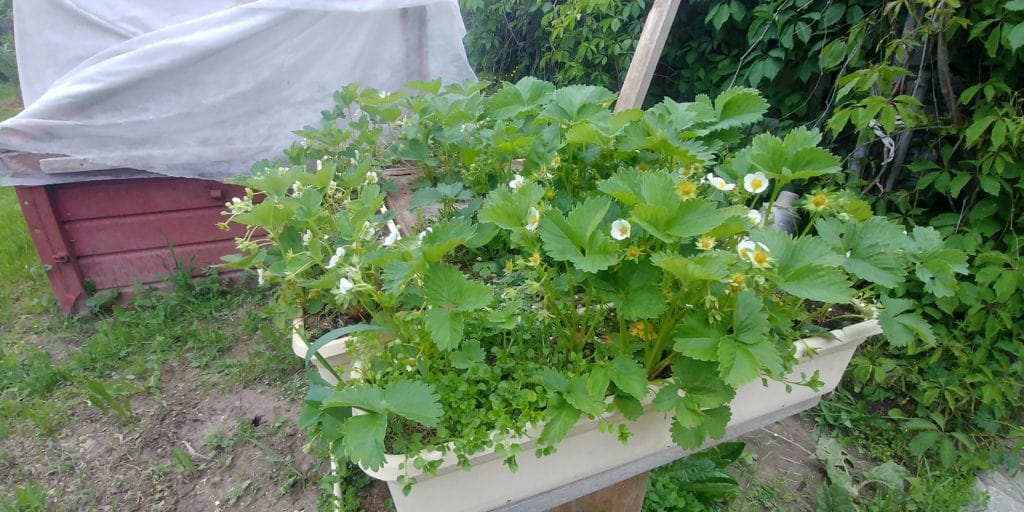I continue the story about gardening and agriculture in the Smirnov family. The first part of this story can be found in the previous article.
Since now, the new season 2020 is in the flowering stage, which means that all plants need proper watering, top dressing, mulching. The future harvest will depend on how they are taken care of today.
Beds
In this part of our guide to gardening I want to talk about the beds. How we make them, how we prepare them, and how we keep them for a rich harvest.
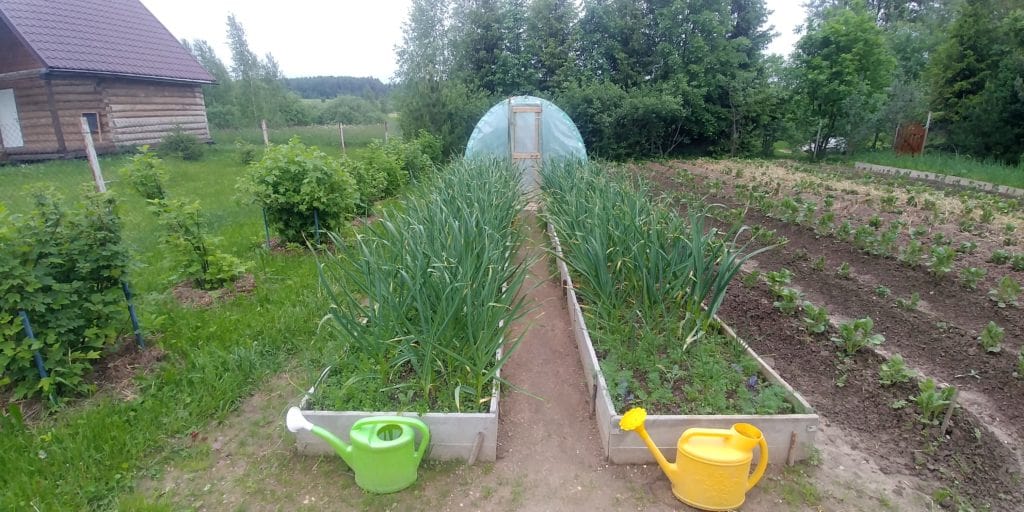
It is believed that beds are best done stationary. The higher, the more convenient – no need to bend too much, which means that it will save our backs. But it must be remembered that very high beds require much more soil, and water goes through them much faster, which prevents plants from getting plenty of water to drink.
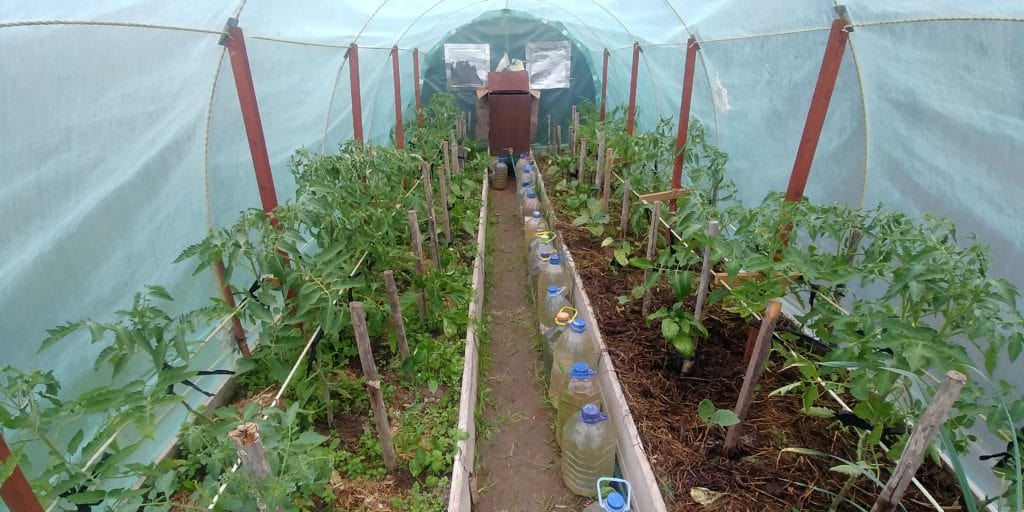
We chose a bed height of 25 cm for ourselves. Width – 90 cm. Length – 6 m. Rows in the ridges go from south to north. 7 rows per bed so that a fokin passes between them. The sides we made of cement.
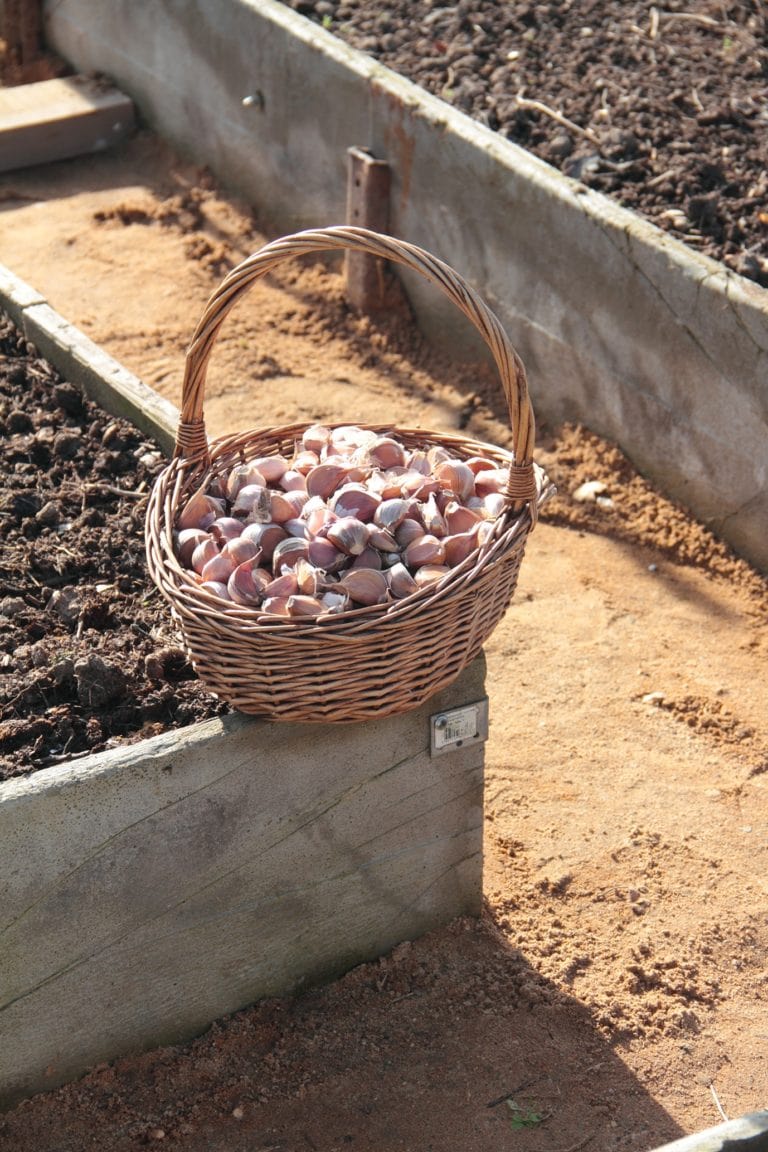
Winter garlic planted in the first decade of October 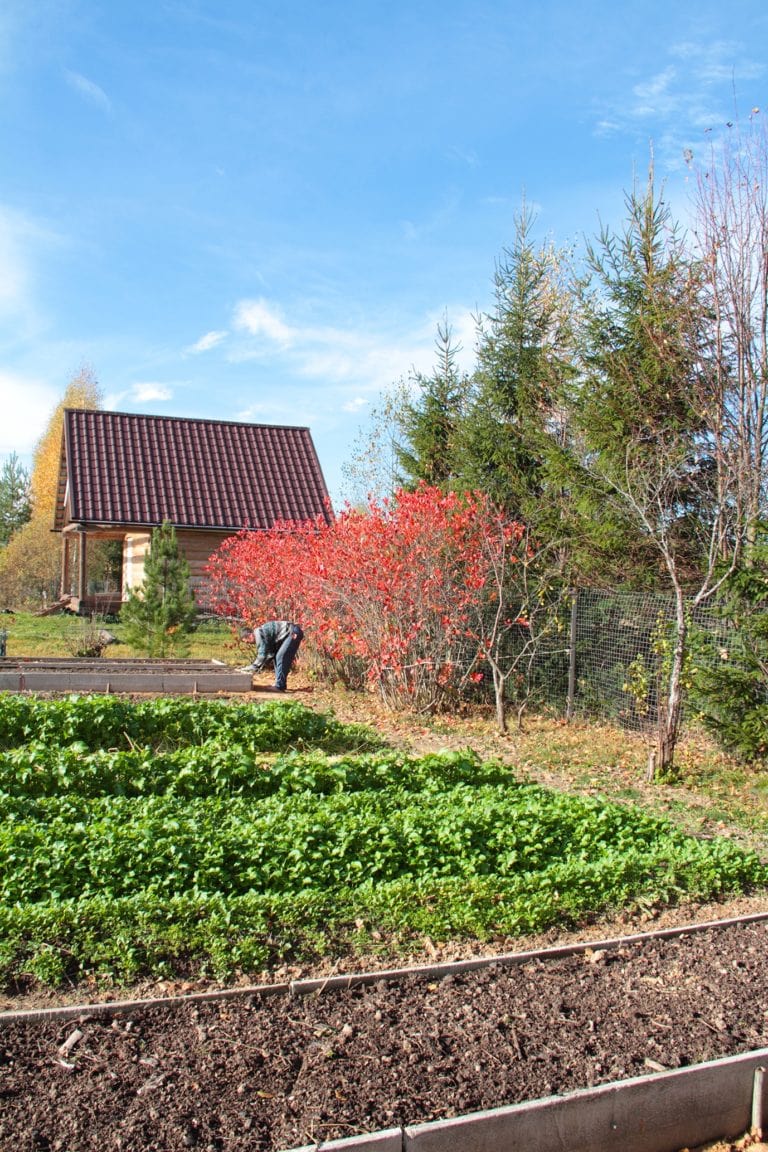
Preparation of beds in the winter. Season 2019
Preparation of beds after the season.
So that the soil in the beds is as fertile as possible for the summer season, we begin to prepare the beds from the autumn of the previous season.
In our gardening to fertilize the beds, we are using compost and a solution with bacteria “Baikal EM-1“. As soon as we made the solution once a season (100 grm per 10 liters), we are using it both for compost and for beds in the winter.
In autumn, the beds are treated with fokin (all weeds are cut to the root), then humus is added there within 1 hour after processing (1 trolley per bed), and everything is spilled with Baikal solution. We need to put compost and shed the solution as quickly as possible after the fokin, in order to achieve the best effect.
Compost
To get a “delicious” compost, it must mature. To mature the compost heap, it is necessary to sweat in the closed state for a little bit over a year.
Compost heap composition: grass, human waste, Baikal solution.
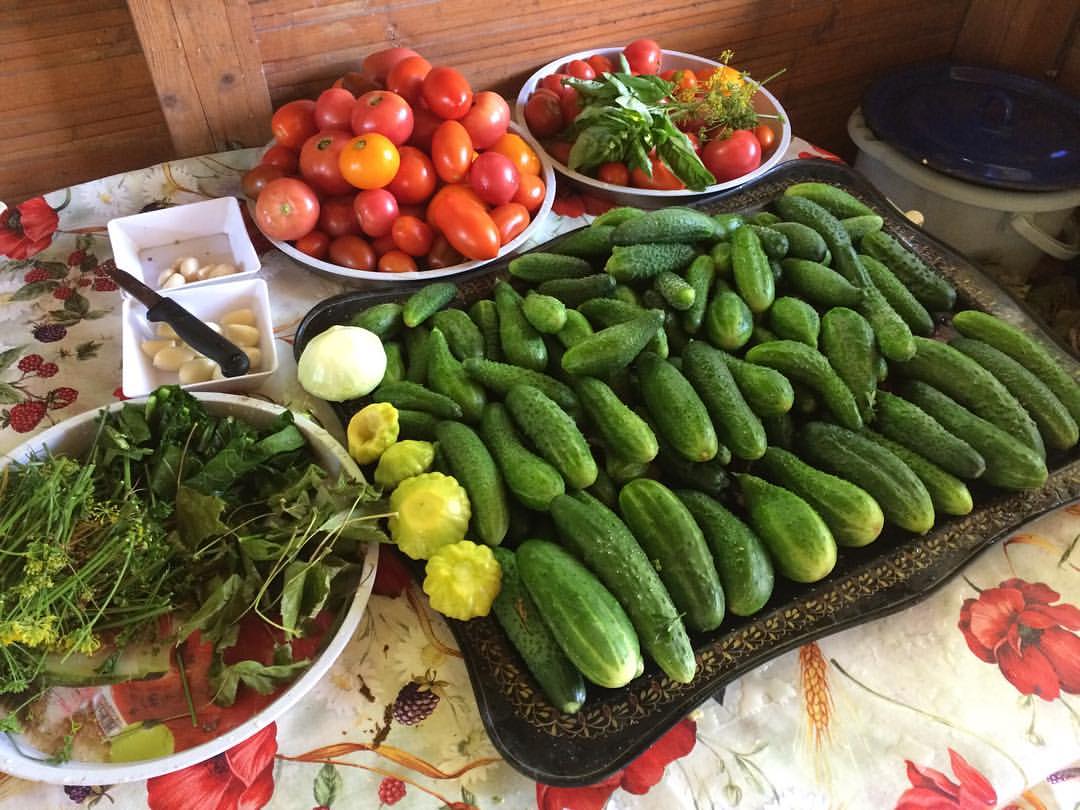
Preparation for conservation. Season 2019
Mulching
Ideally, also mulch the beds under the winter. Mulching – surface coating of soil with mulch. In our gardening, the role of mulch is performed by freshly cut grass.
This process allows you to improve the harvest due to the fact that the mulch does not allow weeds to grow, retains moisture longer, and also retains heat.
In the 2019 season, parents managed to mulch the beds in the winter. Check the result this season;)
What happens to the beds in the season?
2 weeks (10 days) before planting in the ground, it is necessary to remove the overwintered mulch. Walk again with a fokin, and spill from above with a less concentrated solution of Baikal – 10 gm per 10 liters.
The term of 2 weeks is due to the fact that bacteria need time to “eat”, as they eat all wounded plants. And so that they do not begin fresh sowing, they are given time to “digest” the weeds from the beds, and after that they will not be interested in the new sowing.
Agriculture. How to sow?
Seeds should be laid on solid soil, so a groove is first made with a piece of wood. Then the resulting row should be abundantly. Then the seeds are put there and pressed down (required). After this, the resulting row is sprinkled on top of the ground, and the upper part is slammed by the palm, thereby ensuring tight contact of the seeds with the soil. And after that, the rows should be watered again.
It is important to use a diffuser for the jet so that the water does not wash the seeds just sown.
Combined sowing
It is also important to use combined sowing. Since many plants can help each other give the best result.
We use tandems winter garlic – carrots, winter garlic – beets and onions and carrots, onions and beets. Since onions and garlic protect carrots and beets from rodents.
We plant beans to potatoes so that they protect our best potato in the world from beetles.
And in the strawberries we plant garlic to protect against midges.
Crop rotation in gardening.
Another very important thing in getting a good harvest is crop rotation.
If the same crop is grown in the same place for 2 consecutive years, then the quality of the crop will decrease sharply, because this crop will suck out the same beneficial substances from the soil every year and introduce its diseases into the soil.
And if you change the crop in the garden every year, then the soil will not be depleted, but on the contrary will only be enriched.
My parents “twist” their garden counterclockwise.
And the last rule from the Smirnovs – the earth should not be empty. Either cover the beds with mulch, or sow with green manure.
All a good harvest!
